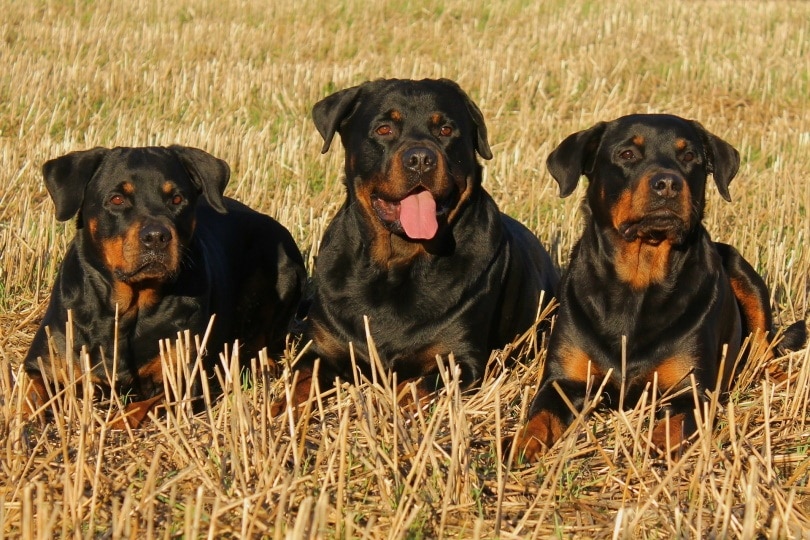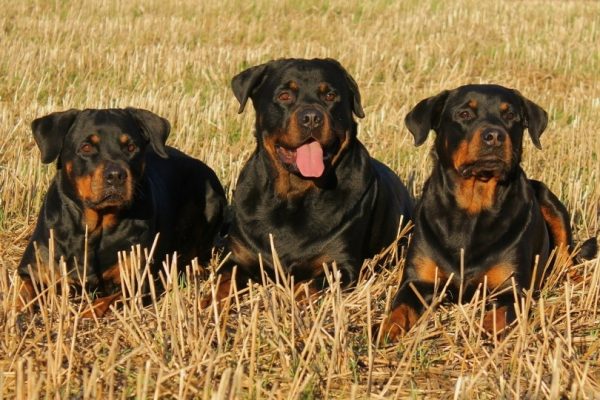If you are looking to adopt a dog, you know that there are many details to consider before you bring home a new pet. Do you have time to take your dog out for a walk multiple times a day? Does your schedule allow for you to be home in the evenings to feed and take your dog out? Do you have the time, patience, and money to train your dog?
One of the biggest questions you might be asking yourself is what breed of dog is best for you and your family. If you have children, you may be especially concerned with avoiding particularly aggressive dogs. In this article, we will discuss aggression in dogs and break down 20 of the most aggressive dog breeds in the world.
Aggression in Dogs
How, exactly, do we define aggression in dogs? When we discuss aggression, you may think we are talking exclusively about dogs that are likely to bite. However, other common behaviors such as growling and barking are also considered to be signs of aggression.
A particular breed’s level of aggression is usually determined through temperament testing. The American Temperament Testing Society test presents dogs with different stimuli to see how they perform in certain situations. These tests aren’t perfect and can’t determine for sure which dogs are aggressive and which are not, but they do offer insight into which breeds have a tendency to display aggressive behaviors.
Another important element to be aware of is prey drive. A dog with a high prey drive is likely to act on its hunting instincts when confronted with small animals, but this doesn’t mean that he is dangerous or aggressive. It is helpful to understand the difference because aggressive behavior toward humans is usually triggered by fear, not your dog’s hunting instinct. If you want your dog to stop chasing squirrels in the park, you will need to handle that differently than you would handle a dog who often growls and barks at visitors in your home.
Now that you understand what we mean by aggression and how it is measured, let’s take a closer look at specific breeds that may be likely to display aggressive behavior.
The 20 Most Aggressive Dog Breeds
1. German Shepherd
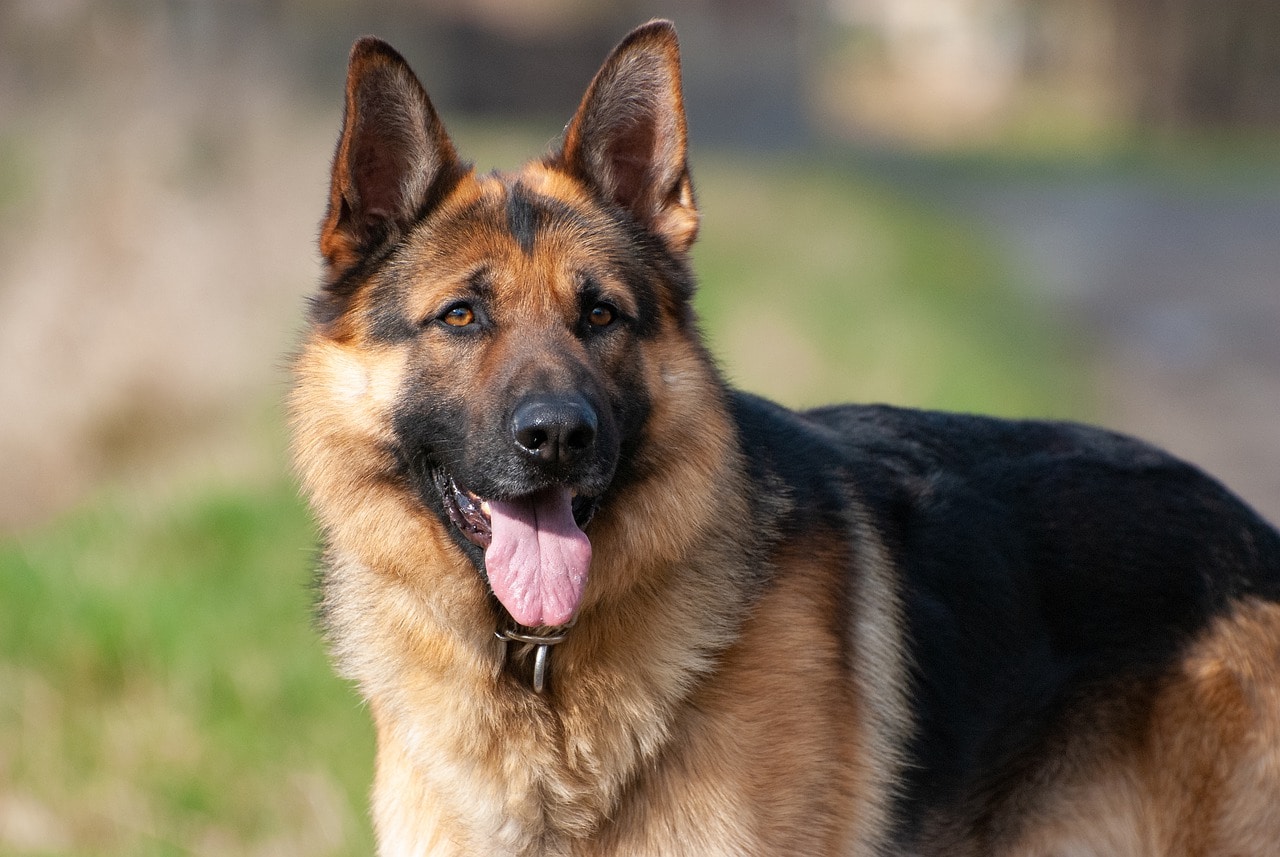
| Lifespan | 10–12 years |
| Average Weight | 48–70 pounds (females) or 66–88 pounds (males) |
| Average Height | 22–24 inches (females) or 24–26 inches (males) |
There’s a reason why German Shepherds are often used as police dogs. They are extremely intelligent, highly trainable, and athletic dogs. Their medium to large size and above-average strength makes them formidable opponents for intruders. These dogs also have very strong jaws; their bite is strong enough to break bones. It’s no surprise that an aggressive German Shepherd could pose a real danger.
Of course, German Shepherds are also very popular family dogs, and with the right training, they can make a wonderful addition to your home. The key is to ensure your dog is properly socialized from a young age. That way, he will understand that visitors are not intruders, but friends.
2. American Pit Bull Terrier
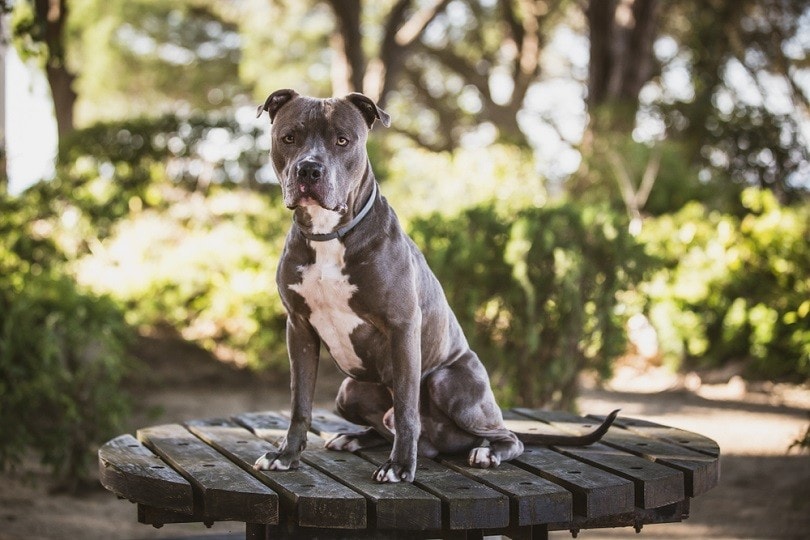
| Lifespan | 12–16 years |
| Average Weight | 40–54 pounds (females) or 55–70 pounds (males) |
| Average Height | 17–18 inches (females) or 18–19 inches (males) |
Pit Bulls are controversial dogs. After all, Pit Bulls are statistically more likely to attack you than pretty much any other type of dog. However, you may not be aware that when people talk about “Pit Bulls,” they are actually talking about several different breeds, as well as Pit Bull mixed breed dogs.
Pit Bulls have been bred for their stocky, muscular build, and unfortunately, they have been used for dog fighting. The American Pit Bull Terrier is no exception, and they may be genetically predisposed to aggressive tendencies. However, this aggression is usually directed at other dogs. It is rare for an American Pit Bull Terrier to show aggression toward their family, especially if they have been properly trained.
3. Siberian Husky

| Lifespan | 12–14 years |
| Average Weight | 35–50 pounds (females) or 45–60 pounds (males) |
| Average Height | 20–22 inches (females) or 21–23 inches (males) |
Generally speaking, Siberian Huskies could exhibit aggressive behavior as a result of poor training. These dogs can be stubborn and pose challenges even for experienced dog owners. Siberian Huskies require persistent training, a lot of exercise, and plenty of social time with humans and other dogs.
If you are a first-time dog owner or otherwise do not have the time to dedicate to a Siberian Husky’s training and care, you may want to consider adopting a different breed.
4. Doberman Pinscher
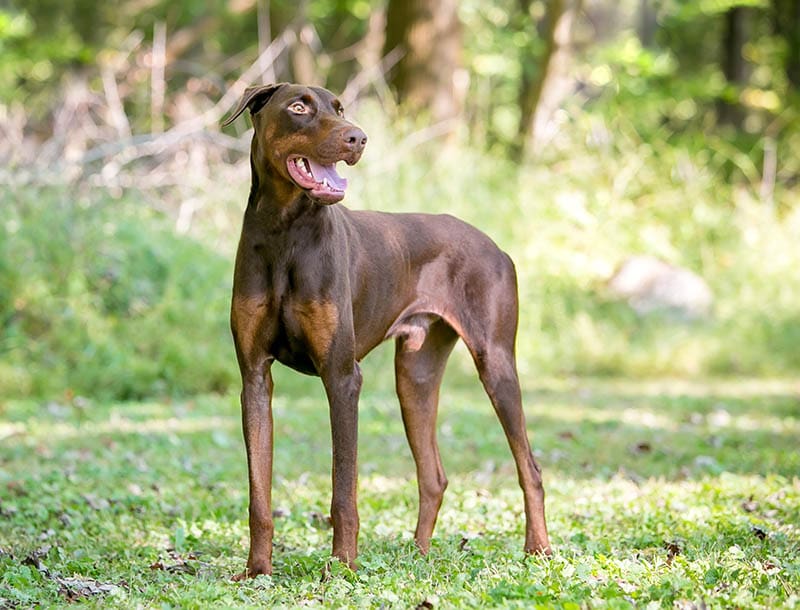
| Lifespan | 10–13 years |
| Average Weight | 60–90 pounds (females) or 75–100 pounds (males) |
| Average Height | 24–26 inches (females) or 26–28 inches (males) |
Doberman Pinschers were originally bred as guard dogs and have been subsequently used as working dogs for police and military personnel. As such, they have a reputation for aggression that isn’t entirely undeserved; Dobermans may be aggressive toward people they don’t know out of fear or out of a desire to protect their owners.
However, Dobermans are highly intelligent and trainable dogs, and with the proper training, they can be very friendly dogs. It is important to socialize your Doberman early on in order to teach them how to behave around new people.
5. Dachshunds
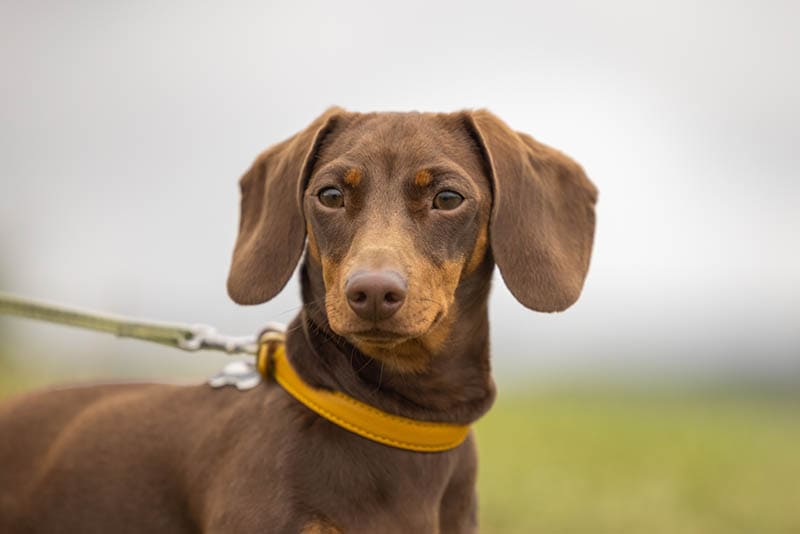
| Lifespan | 12–16 years |
| Average Weight | 16–32 pounds |
| Average Height | 8–9 inches |
Dachshunds may be small, but their bark is mighty. They tend to be the most aggressive toward strangers, and though they probably can’t do much damage, persistent barking can become an issue. If you want to put an end to your Dachshund’s aggressive behavior, you need to train him the way you would train any larger breed.
6. Rottweiler
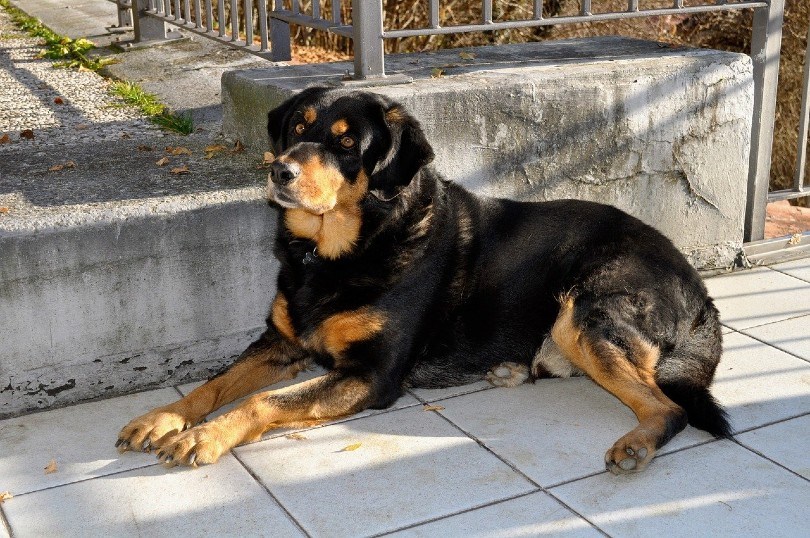
| Lifespan | 9–10 years |
| Average Weight | 80–100 pounds (females) or 95–135 pounds (males) |
| Average Height | 22–25 inches (females) or 24–27 inches (males) |
It should come as no surprise that Rottweilers make the list. Like Pit Bulls, Rottweilers have a reputation for being aggressive. They are territorial dogs and tend to have the most problems with other dogs. They also aren’t necessarily well suited for households with other small pets because they tend to have a high prey drive.
As a result, they will do best in a home where they are the only pets. However, in the right environment and with the proper socialization, Rottweilers can be great companions.
7. Jack Russell Terrier
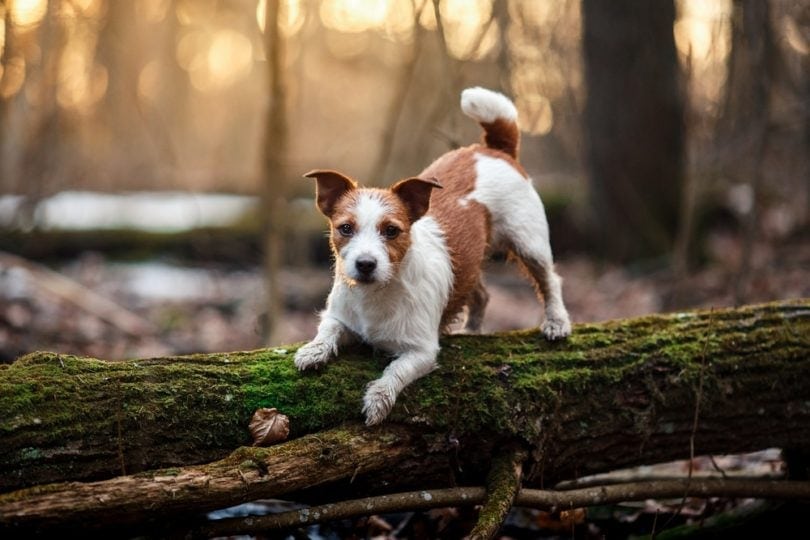
| Lifespan | 13–15 years |
| Average Weight | 13–17 pounds |
| Average Height | 12–15 inches |
Jack Russell Terriers can become possessive of their owners, family members, or stuff they consider personal property. They can display aggressive protective behavior. Therefore, these tendencies need to be addressed by establishing boundaries early on.
As their owner, you are their “pack leader,” so if you show them you are in charge, you can likely prevent your pup from trying to supersede the pack order.
8. Akita
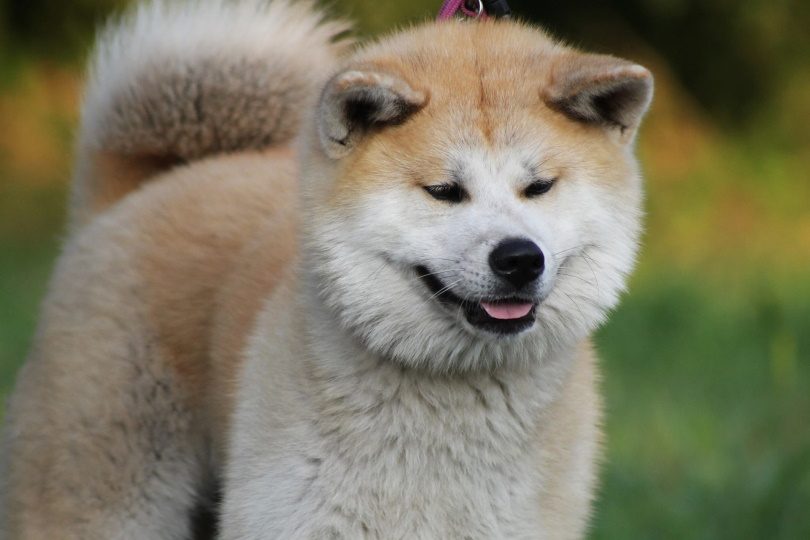
| Lifespan | 10–13 years |
| Average Weight | 70–100 pounds (females) or 100–130 pounds (males) |
| Average Height | 24–26 inches (females) or 26–28 inches (males) |
The Akita breed originated in rural Japan, where they were hunting dogs. They were made for harsh conditions and they actually have webbed toes that help them walk on ice and snow. These dogs typically form very strong bonds with their families, but they may be standoffish with strangers.
This trait, combined with a high prey drive, can make them a difficult breed for first-time dog owners. Akitas respond best to positive reinforcement as opposed to forceful training.
9. Chihuahua
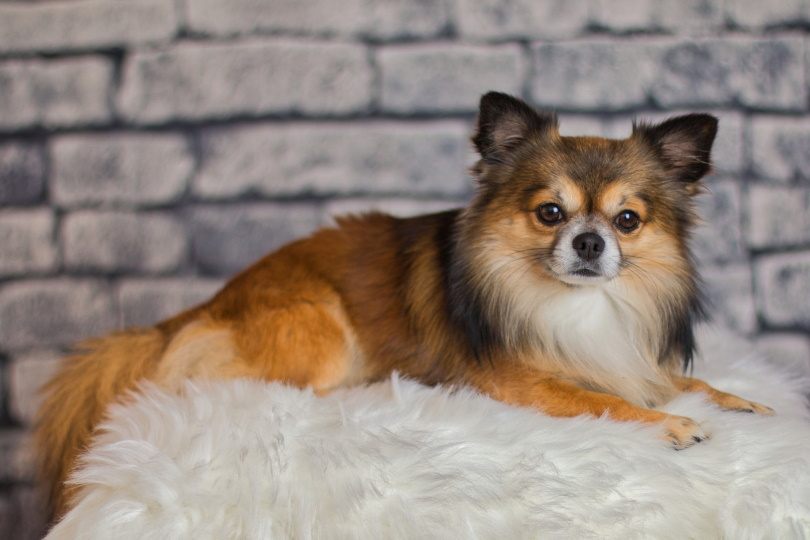
| Lifespan | 14–16 years |
| Average Weight | 3–6 pounds |
| Average Height | 5–8 inches |
One of the smallest dogs on this list, the Chihuahua may seem like a strange choice. After all, they are smaller than most cats and are incapable of inflicting much harm. However, Chihuahuas can be prone to aggressive behavior, perhaps because they are often inadequately trained.
It may feel less imperative to train small dogs like Chihuahuas because they are relatively harmless, but they can be sassy and need to know who’s in charge.
10. Chow Chow
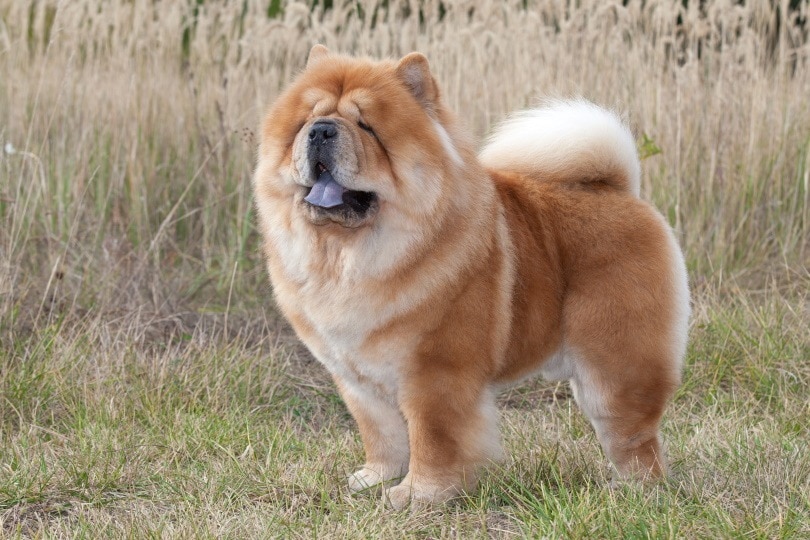
| Lifespan | 8–12 years |
| Average Weight | 45–70 pounds |
| Average Height | 17–20 inches |
Despite their teddy bear-like appearance, Chow Chows are capable of having a mean streak. Chow Chows can be aggressive toward strangers and other dogs if they are not adequately socialized, and they may be more likely to bite than other breeds.
If you plan to adopt a Chow Chow, you need to make sure you have the time to give this dog the training and attention it needs.
11. Dalmatian

| Lifespan | 11–13 years |
| Average Weight | 45–70 pounds |
| Average Height | 19–24 inches |
Famous for their role in the Disney film 101 Dalmatians, these dogs have a reputation for being wholesome family dogs. However, like other dogs we have discussed, Dalmatians have a history as guard dogs, which makes them particularly aggressive toward strangers.
12. Shar Pei
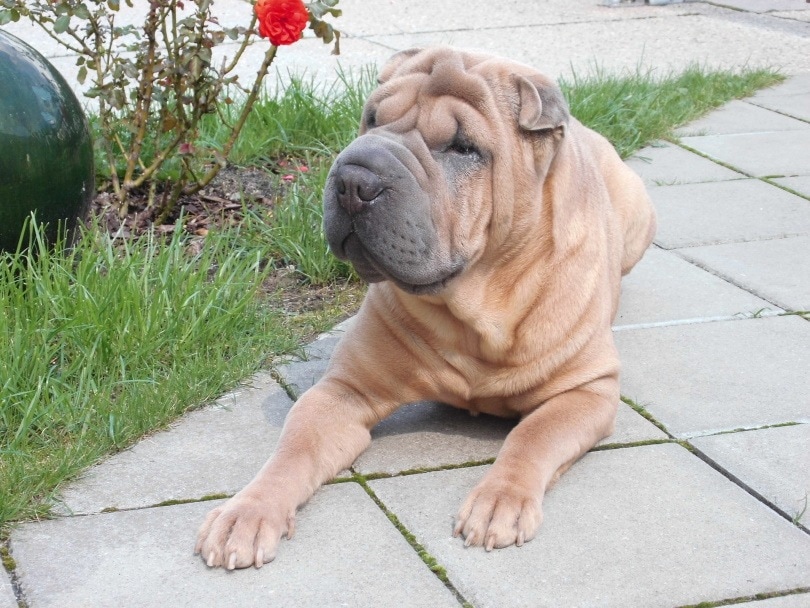
| Lifespan | 8–12 years |
| Average Weight | 45–70 pounds |
| Average Height | 18–20 inches |
The Shar Pei’s ancestry can be traced all the way back to the Chinese Han dynasty, some 2,000 years ago. They have a long history as guard dogs, hunters, and pit fighters. Despite their history, Shar Peis are generally great companions. However, they can be stubborn, and their history as fighters can come out in the form of aggression toward other dogs and humans.
Note that these dogs are not typically a great fit for families with young children unless they are raised with children in the home.
13. Cane Corso
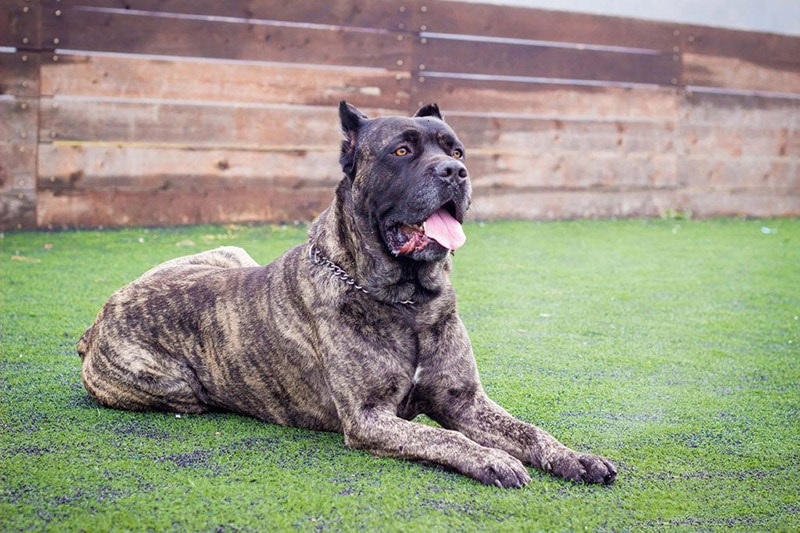
| Lifespan | 9–12 years |
| Average Weight | 90–120 pounds |
| Average Height | 24–26 inches (females) or 25–28 inches (males) |
The Cane Corso breed originated in Italy and is descended from an ancient Roman dog called the Canis Pugnax. These dogs were bred to be brave and powerful and were used as Roman war dogs. With a genealogy like that, it’s no surprise that Cane Corsos can sometimes present issues with aggression. Irresponsible breeding has also led to some dogs with unstable and potentially dangerous temperaments.
Although headstrong, Cane Corsos will respond to consistent training. If you are a firm and confident dog owner, your Cane Corso will likely respect you.
- You may also be interested in: Male vs. Female Cane Corso: What’s the Difference?
14. Dogo Argentino

| Lifespan | 9–15 years |
| Average Weight | 88–95 pounds (female) or 88–100 pounds (male) |
| Average Height | 24–26 inches (females) or 24–27 inches (males) |
As their name suggests, Dogo Argentinos were originally bred in Argentina, where they hunted large animals such as puma and boar. They are well-known for their aggressive tendencies and are, in fact, banned in the UK for this reason. They can be loyal and friendly, but you need to take the time to extensively socialize them to avoid aggressive behavior.
If you have children, other pets, or live in an urban area, they may not be the best dogs for you.
15. Boxer

| Lifespan | 10–12 years |
| Average Weight | 50–65 pounds (females) or 65–80 pounds (males) |
| Average Height | 22–24 inches (females) or 23–25 inches (inches) |
Boxers are high-energy dogs that need a lot of exercise. If they don’t get enough exercise, they can become bored or frustrated, which can lead to aggressive behavior. This is particularly dangerous because Boxers have a strong bite that can lead to serious injury.
If properly trained and exercised, Boxers can be fantastic family dogs.
16. Rhodesian Ridgeback

| Lifespan | 10–12 years |
| Average Weight | 65–75 pounds (females) or 80–90 pounds (males) |
| Average Height | 24–26 inches (females) or 25–27 inches (males) |
The Rhodesian Ridgeback breed originated in Africa. These dogs have been used to protect livestock from lions, so it goes without saying that they are a powerful breed. They are relatively reserved around strangers but can be very affectionate toward their family and even often get along with other household dogs.
However, these dogs have a strong prey drive and their hunting instincts may kick in when they encounter small animals and unfamiliar dogs.
17. Pomeranian
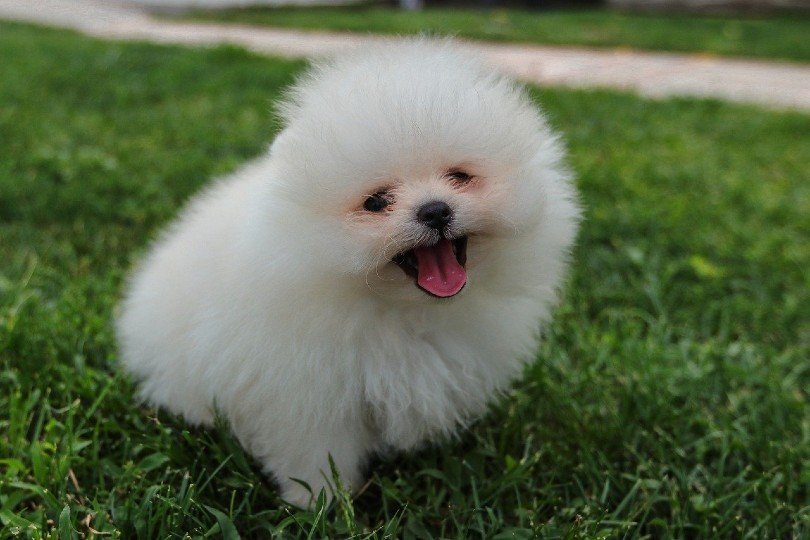
| Lifespan | 12–16 years |
| Average Weight | 3–7 pounds |
| Average Height | 6–7 inches |
Pomeranians are a small breed that can be easily intimidated by larger animals and people. As a result, they can become aggressive. If you find that your Pomeranian is aggressive toward members of the family, you may need to establish your dog’s place in the “pack.”
A dog who is confused about the pack order may feel stress, which can result in aggression. If they recognize that you are the leader, they won’t have any reason to be aggressive.
18. Saint Bernard

| Lifespan | 8–10 years |
| Average Weight | 120–140 pounds (females) or 140–180 pounds (males) |
| Average Height | 26–28 inches (females) or 28–30 inches (males) |
The Saint Bernard is a working dog that originated in the Alps. For hundreds of years, they have been used as rescue dogs in avalanches, and they do well when they have a purpose. Some Saint Bernards, particularly males, can be stubborn and will test your authority. You must make sure to properly train these dogs so that they will respect you.
Socializing your Saint Bernard will help expose them to unfamiliar people and places, which will make them less suspicious and therefore less likely to act out.
19. Bullmastiff
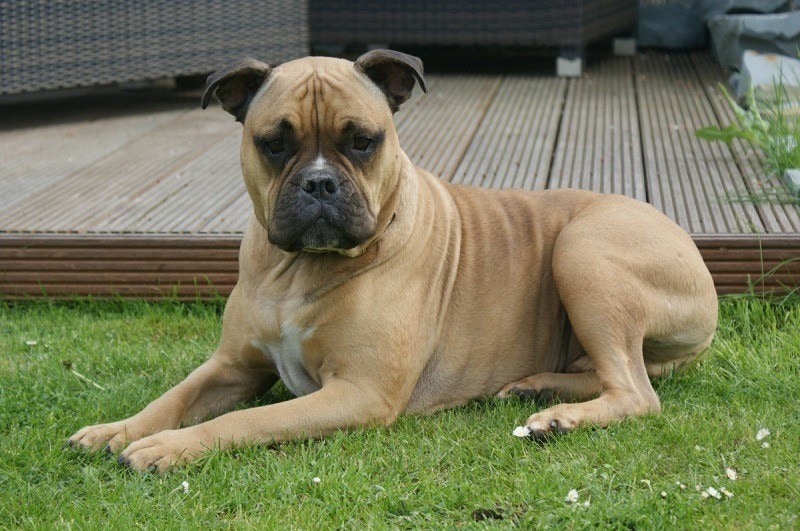
| Lifespan | 7–9 years |
| Average Weight | 100–120 pounds (females) or 110–130 pounds (males) |
| Average Height | 24–26 inches (females) or 25–27 inches (males) |
Bullmastiffs have guarding instincts that can cause unwanted behavior and aggression if they are not properly trained and socialized. Fortunately, they are relatively easy to socialize. If you take them out on walks as young dogs to meet different kinds of people, they will likely grow up to be very friendly and laid-back animals.
- You may also want to read: 150+ Bullmastiff Names: Tough, Cute & Perfect Ideas for Your Bullmastiff
20. Wolf-Dog Hybrids
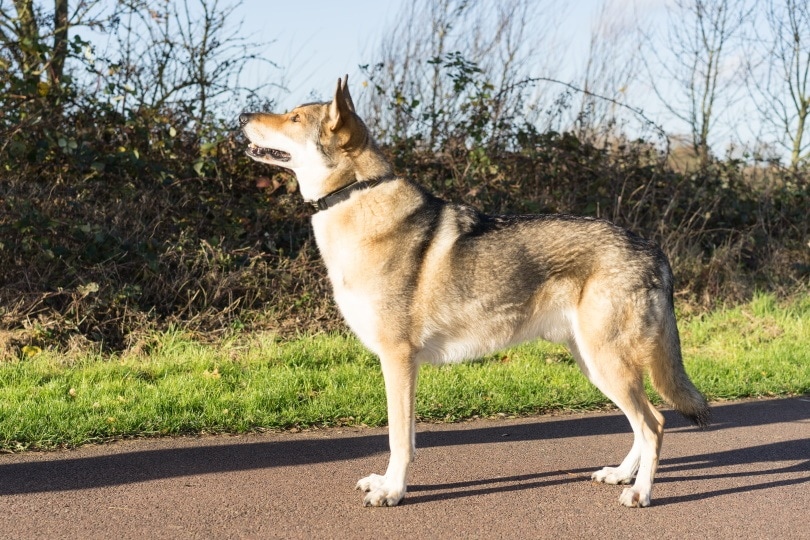
| Lifespan | Depends on the hybrid; the average lifespan of a wolf in captivity is 12–14 years |
| Average Weight | 75–130 pounds (females) or 85–155 pounds (males) |
| Average Height | 26–34 inches |
Since wolf-dog hybrids result from a dog mating with a wolf, their height, weight, lifespan, and disposition can vary depending on the parent breed of the dog. In the wild, wolves tend to display aggressive behavior when they reach sexual maturity. They have a tendency to challenge the alpha member of the pack, which could present problems in a domestic household setting where you are the pack leader.
The most challenging part about adopting a wolf-dog hybrid at a young age is that you don’t know whether or not this aggressive behavior will appear when the dog matures.
Featured Image Credit: K L, Pixabay
Contents
- Aggression in Dogs
- The 20 Most Aggressive Dog Breeds
- 1. German Shepherd
- 2. American Pit Bull Terrier
- 3. Siberian Husky
- 4. Doberman Pinscher
- 5. Dachshunds
- 6. Rottweiler
- 7. Jack Russell Terrier
- 8. Akita
- 9. Chihuahua
- 10. Chow Chow
- 11. Dalmatian
- 12. Shar Pei
- 13. Cane Corso
- 14. Dogo Argentino
- 15. Boxer
- 16. Rhodesian Ridgeback
- 17. Pomeranian
- 18. Saint Bernard
- 19. Bullmastiff
- 20. Wolf-Dog Hybrids

